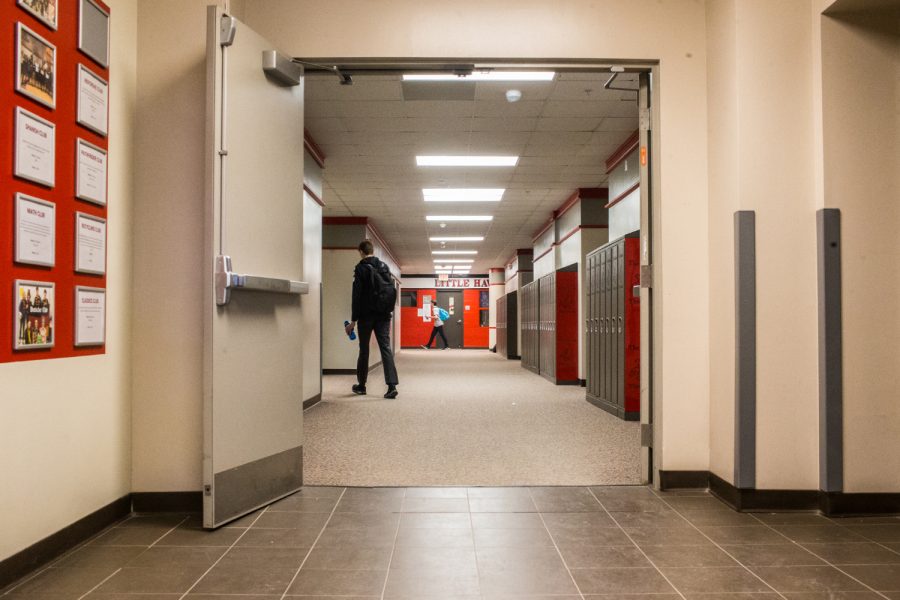Opinion | Gifted K-12 programs are broken programs
Gifted programs are thought to be a measure to get ahead, but they unintentionally discriminate against minority children who could use them the most.
Students traverse a hallway at Iowa City High School on Wednesday, February 13, 2019.
August 31, 2020
It is no secret that gifted and talented K-12 programs often ostracize minority students. This process is commonly known as racialized tracking, where students of color are weeded out of accelerated or advanced learning programs. Even in schools with a large minority population, there is often an uneven distribution of white to BIPOC students in gifted and accelerated programs. This practice perpetuates the school-to-prison pipeline, segregating K-12 classrooms.
Multiple studies show the disparity between white and minority students in gifted programs.
According to USA Today, the Public School 9 in Brooklyn, New York is incredibly diverse from an external viewpoint, but segregated internally. At this school, about 66 percent of the student population is BIPOC and 31 percent is white, yet the majority of students in gifted and talented education programs are white or Asian.
Schools in Iowa clearly demonstrate classroom segregation. According to the most recent numbers from the National Center for Educational Statistics, Iowa public schools had 3 percent of the Black population enrolled in gifted and talented programs, 4.2 percent Hispanic, 13.9 percent Asian, and 10.5 percent white in 2013-2014. There is a clear disparity between which kids have the opportunity to participate in gifted and talented education programs and those who don’t.
Standardized testing is a large part of the problem when it comes to the gap in minority students being in gifted K-12 programs. A lot of the time, entrance into these programs is based on a combination of classroom performance and scoring on standardized tests, however, standardized tests are a poor and inadequate measure of intelligence.
Research has shown there are many external socioeconomic factors that play a role in students’ performance in standardized testing — housing, income levels, education levels of students’ parents, crime rates, and more. These factors tend to apply more to African American and Hispanic populations than they do to white populations.
Instead of pushing minority students away from these accelerated opportunities in the classroom, we should be encouraging and setting up programs for all students to pursue their own avenues of interest and strength, especially at a young age.
This fall, the Public School 9 in Brooklyn, New York cut gifted and talented programs for incoming kindergarteners, according to USA Today. In its place, the school will offer opportunities for a wider range of students to participate and engage in their own strengths and interests.
Minority students are much more likely to be subjected to suspensions, expulsions, juvenile systems, disciplinary action from student resource officers, exclusion from accelerated and gifted programs in school, and more, according to The African American Policy Forum.
As schools are opening up it’s important that we are exhibiting to BIPOC students that the color of their skin does not dictate their path, instead of enforcing harmful stereotypes which in turn ostracized them from opportunities and areas in the classroom they might have otherwise succeeded in.
Many minority students have been targeted and displaced from opportunities since their start in the education system. K-12 teachers, staff, and administration need to be more aware of the various backgrounds of their students in relation to their performance and behavior in the classroom.
They should be paying attention to the interests and strengths of each individual student instead of grouping everyone into a category of intelligent or not based on standardized testing. We should be meeting students where they are at in the classroom and encourage them to indulge in their interests and strengths whether that be visual arts, music, theatre, sports, or academics.
Columns reflect the opinions of the authors and are not necessarily those of the Editorial Board, The Daily Iowan, or other organizations in which the author may be involved.



















